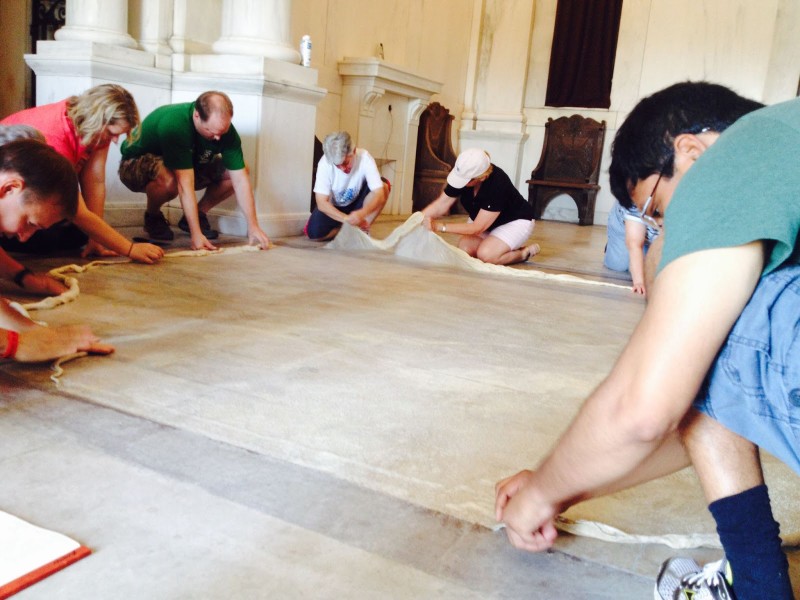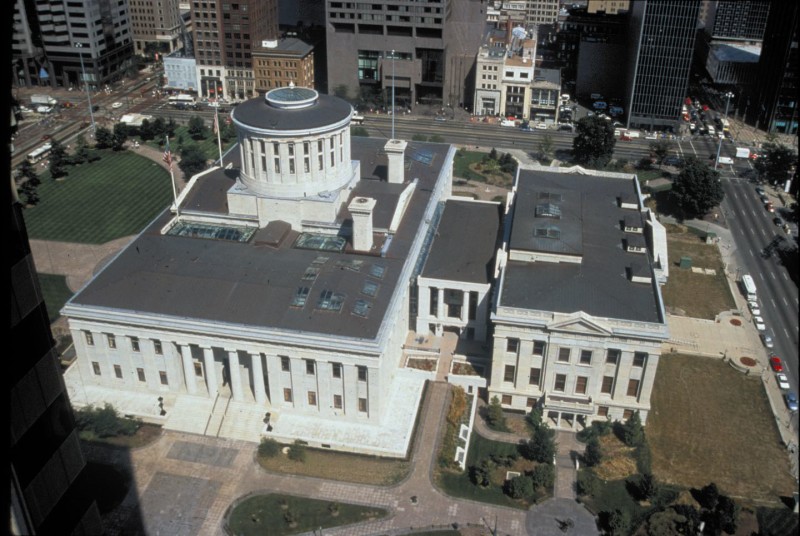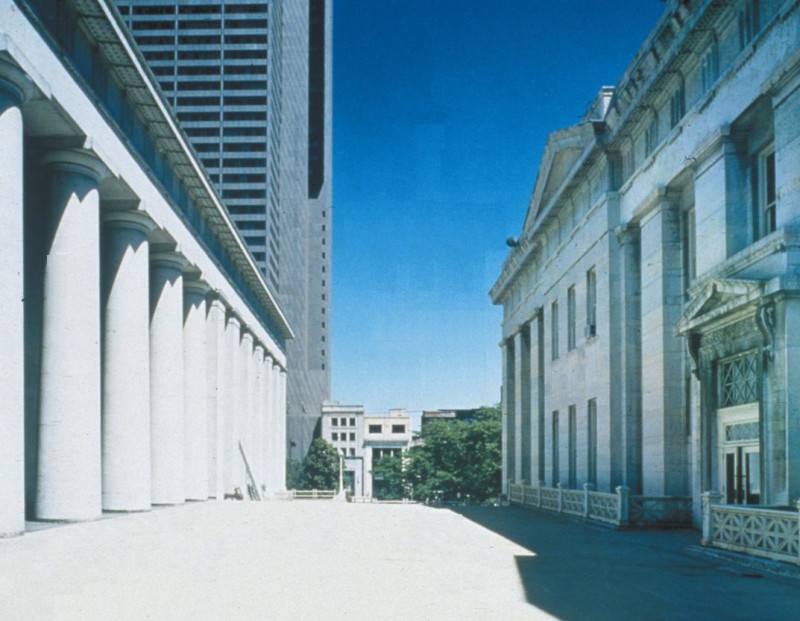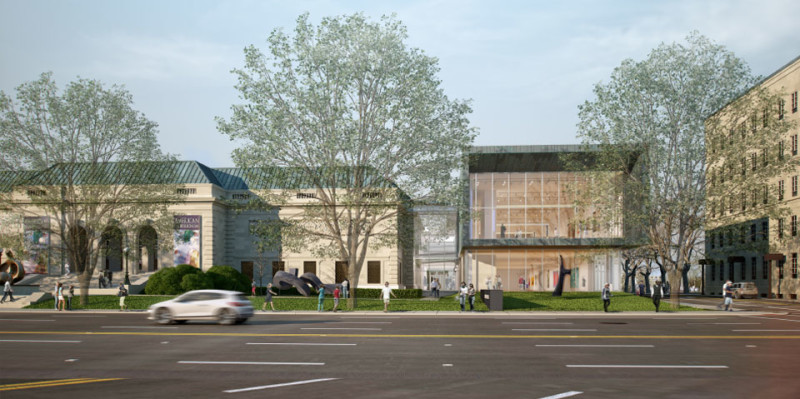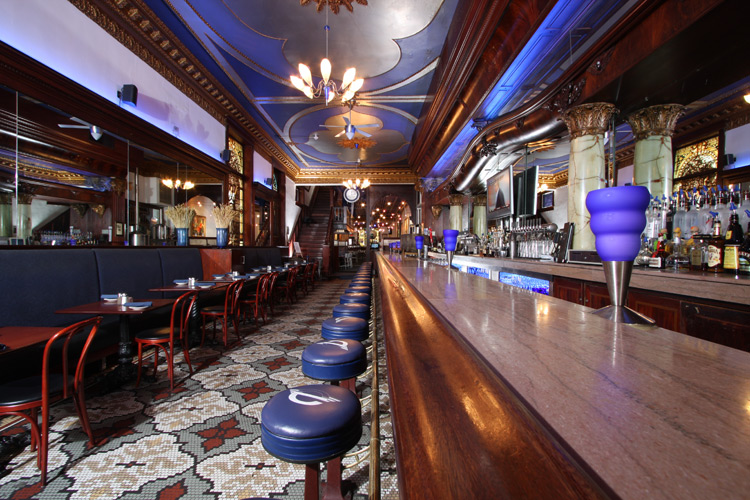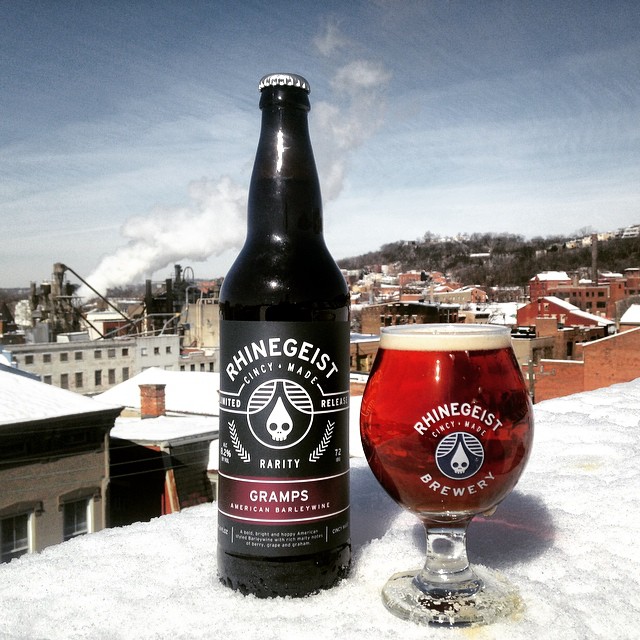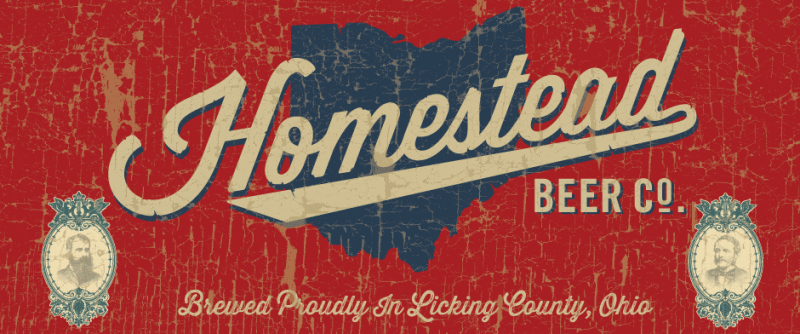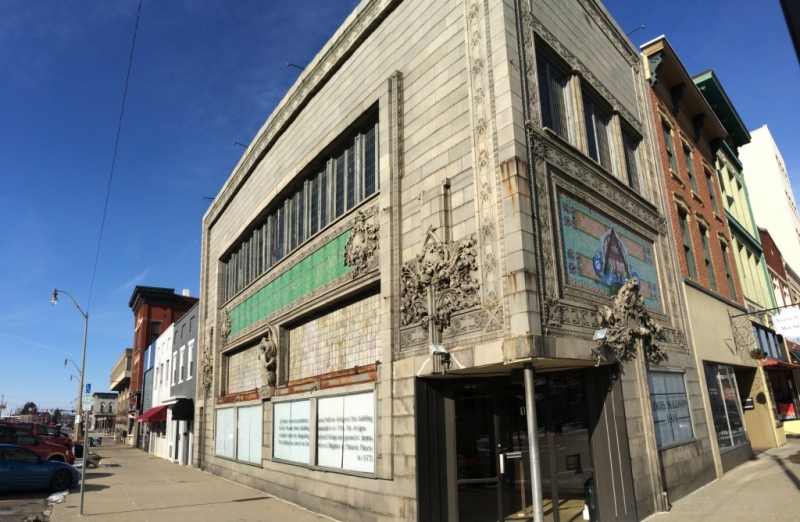Call for demonstrators: 2016 Old House Fair
Heritage Ohio’s second Old House Fair will be held in May in historic downtown Medina, and we’re putting the call out now for demonstrators to submit session proposals. We’re looking for artisans interested in teaching and/or demonstrating on masonry, plaster, windows, stonework painting, energy efficiency, and controlling moisture, just to name a few ideas.
If you’re interested in learning more, you can review our Call for Demonstrators here, and contact Frank Quinn (614.258.6200 of fquinn@heritageohio.org) with any questions you have.
The Tax Credit Roundup
We’re celebrating the most recent announcement of Ohio Historic Preservation Tax Credit awards (Round 15, for those of you keeping score). Here’s a selection of newspaper articles from across the state, highlighting some of the award recipients and their projects.
This cincinnati.com article provides an overview of the Cincinnati projects receiving credits.
Check out an overview on Cleveland projects from Crain’s here.
In Cleveland, the downtown Huntington Building will use its $25 million catalytic award to help defray a $270 million project. Read more here.
An iconic Bexley movie theatre is among the Columbus-area projects to benefit from the latest OHPTC round. Read more here.
Dayton’s long-neglected Steam Plant will receive tax credits to spur its redevelopment.
In Eaton, a former high school will be converted into senior housing.
Downtown Newark’s Brunswick Building is slated for redevelopment.
Wittenberg joins a growing list of Ohio universities utilizing tax credits to redevelop their historic buildings. Read more here.
For the basics of the program, you can learn more at ODSA’s website here.
Advocacy Alert: Proposed tax credit act needs your support!
To the excitement of preservationists across the country, the Historic Tax Credit Improvement Act (HR 3846) was introduced Wednesday, October 28. So why the excitement? For starters, HR 3846 offers the following tax credit improvements:
1) Small deals (less than $2.5 million in qualified rehabilitation expenditures) would see the eligible credit jump from 20% to 30%.
2) Transfer of credits as a tax certificate could give owners of smaller projects greater flexibility to bring in investors, and make capital easier to access.
3) Substantial rehabilitation (the threshold for becoming eligible to take advantage of the credits) would drop to 50% of the adjusted basis from the current 100%.
Add in better treatment of state tax credits when it comes to federal taxation, and other improvements, and you can begin to see how these changes, if passed, could inject a wave of new investment for countless small project rehabs.
Here in Ohio, we have Representative Pat Tiberi, and Representative Mike Turner to thank for helping lead the way as original co-sponsors of the bill, but we’re reaching out to you today, to encourage you to contact your representative, to ask him or her to sign on as co-sponsors for HR 3846 (or to thank Reps Tiberi and Turner for their support). You can find your representative here.
Check out this one-pager from the Trust, which summarizes the bill and how it improves the current federal historic tax credit.
YOP Green Lawn Abbey Marble Cleaning Workshop Recap

YOP members (left to right) Sarah Marsom, Nimisha Bhat, Kalpa Baghasingh, Pearl-Jean Mabe, & Michael Blau.
Built in 1927 by the Columbus Mausoleum Company, Green Lawn Abbey is a neoclassical mausoleum listed in the National Register of Historic Places and has been undergoing a restoration for a number of years. With 1½“ thick granite walls, marble interior and an imported tile roof, it still impresses with its regal structure and beautiful stained windows. Over the years, the Abbey’s foyer floors have accumulated large areas of badly stained marble from years of organic and metallic damage.
Enter Community Partnership Grants Coordinator for the City of Columbus and fearless leader Kate Matheny. Kate has dedicated herself to restoring Green Lawn Abbey to make it into a usable space for programming, and successfully acquired CLG grants and other opportunities to preserve this historic structure. The Young Ohio Preservationists worked with the Green Lawn Abbey Preservation Association to coordinate a workshop in order to learn about and do some hands-on marble cleaning on July 25th. Kate, her husband Tom of Schooley Caldwell Associates, and Matt Wolf of the Centennial Preservation Group kicked the workshop off by giving a history of the building and its structure. The workshop volunteers learned about different types of marble, how the Abbey’s preservation management plan was created, and the basic process behind marble restoration.
After surveying the test area set aside for cleaning, volunteers got a brief explanation from Matt about the type of poultice being used on the marble. The poultice, once applied, thickens over time and basically pulls up stains and dirt from the marble. The poultice had been applied a little over 24 hours prior to the workshop, and no one quite knew what the results would be. Workshop volunteers then rolled their sleeves up and got to work, removing the poultice as a team by peeling it back slowly. Wet rags and water were then used as an additional measure to remove any remaining dirt that had been brought up by the poultice.
Volunteers discovered a 75% improvement after all the cleaning efforts, and it was decided that the marble would look shiny and new after a few more applications of the poultice and a little more elbow grease!
To become involved in future restoration events at Green Lawn Abbey, keep an eye out on the Green Lawn Abbey website and their Facebook page.
For more pictures check out the album on YOP’s Facebook page
Article by Nimisha Bhat
![]()
Have you checked out the Building Technology Heritage Library?
When it comes to historic preservation weaknesses, I have a few (ie, many). And right up at the top of the list are plan books. These historical publications may have covered contemporary house plans, painting palettes, or more esoteric subjects such as cast iron storefronts. As an example, Sears was going all out during the first half of the 20th century, hawking their “Honor-Bilt” homes in their ubiquitous catalogs.
I love perusing these plan books because they provide great insight on what people were building or using, and can provide good rehabilitation inspiration. So, you can imagine my excitement at being reminded about the Building Technology Heritage Library, the multi-year project from the Association for Preservation Technology to digitize these resources and make them available through the Internet Archive. Now, all you need is an internet connection to review the Sears 1936 catalog (go ahead, see what Sears had to offer here) and literally thousands more. Happy online reading!
Lakewood Alive leads restoration process for 1446 Mars Avenue home
While the majority of our Ohio Main Street Programs devote 100% of their time to improving their respective downtowns, some programs have begun dipping their toes into the residential revitalization pool. Main Street Wooster helped make the Howey Houses project a reality, and Main Street Medina recently completed its Renew Medina project to give new life to a neglected residence adjacent to the downtown.
Now, Lakewood Alive has teamed with Detroit Shoreway to rehab a former boarding house back into a single-family home. You can learn more about the home’s happy outcome here (and make sure you check out the Before/After image gallery at the bottom of the post).
Although downtown revitalization programs have traditionally focused their resources solely on work to improve the business district, we’ve come to learn that the downtown’s health is more often than not inextricably tied to the health of the surrounding neighborhoods, including the residential neighborhoods that ring the downtown. Programs that have forged community partnerships, and that have the financial and human resources to take on these special projects, are finding that their mission-driven accomplishments sometimes happen outside of the downtown, as well as in the downtown.
Ohio Historic Preservation Tax Credit saved!
Update (6/16/15): Senators have removed language applying a moratorium on the successful OHPTC program! Thank you! Your messages touting the economic power of the tax credit resonated loud and clear among the Ohio Senate.
Yesterday, the Ohio Senate proposed to eliminate the Ohio Historic Preservation Tax Credit (OHPTC), with the possibly of transitioning it into a grant program several years from now.
This highly successful economic development program, without prior discussion, is in jeopardy of disappearing. Without the OHPTC Program, Ohio would not have had more than 1.4 billion dollars invested in the state, in the process rejuvenating countless abandoned or blighted buildings. The OHPTC promotes economic development at its finest: creating income-producing, taxpaying, and neighborhood-contributing buildings.
Since the program’s inception in 2007, the tax credit program’s investment statistics speak for themselves: 7 million square feet of redeveloped building space; 3,429 new housing units created; and an overall ROI of $6.70 for every dollar of tax credit generated.
To help save the Ohio Historic Preservation Tax Credit Program, we need you to do two things TODAY. Please email Senator Oelslager, Chair of the Senate Finance Committee, Senator Peterson, Chair of the Senate Ways & Means Committee, and your Senator to tell them why this will be detrimental to Ohio’s economic growth.
Thank you for helping us to send the message about the tax credits where it’s needed most!
Preservation Month Photo Contest | And the winner is…
Thank you to everyone who voted this year, and congratulations to Judith Khaner, this year’s winner!
Judith’s winning image features the interior of the Arcade, a Cleveland landmark revitalized for shops and hotel use in the early 2000s. As this year’s winner, Judith’s image will be featured on a future issue of Revitalize Ohio.
Whether entering our contest or voting for a winning entry, we hope you’ll join us next year for Preservation Month for our 2016 Photo Contest.
Here’s Judith’s winning entry:
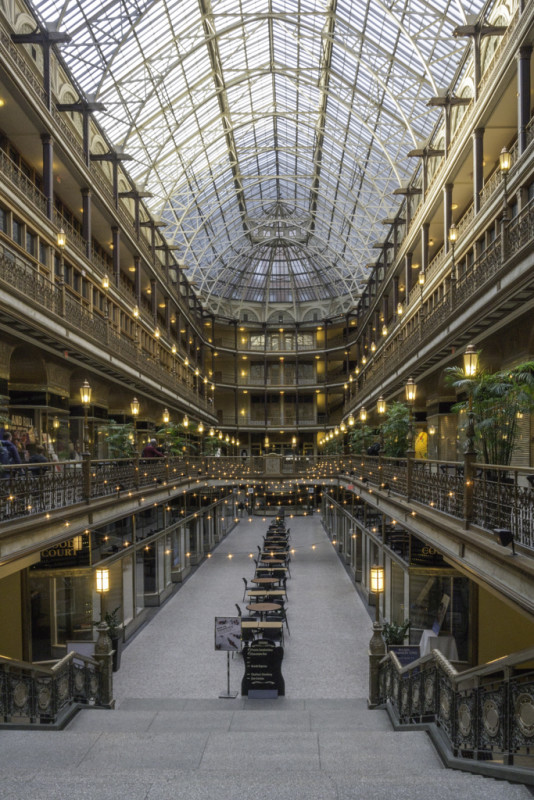
Sensitive Additions To Historic Buildings: A Primer
By: Kalpa Baghasingh
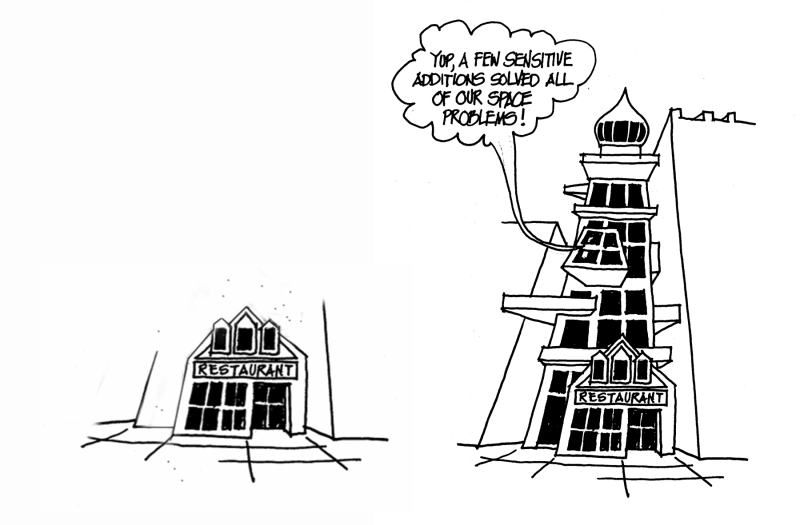
Sketch by: Jeff Gordon, AIA, Former Director of Design at Schooley Caldwell Associates, drawn for Sympathetic Additions to Historic Buildings, 2012 AIA lecture, by Robert Loversidge, FAIA, President and CEO, Schooley Caldwell Associates
Additions are one of the trickiest aspects of working with a historic building. Additions are often required for programmatic reasons. The National Park Service (the agency that develops historic preservation policy and guidance on preserving and rehabilitating historic buildings) advises that “an exterior addition should be considered once it has been determined that the new program requirements cannot be met within the existing building envelope.” Sometimes the available square footage and configuration of spaces do not meet the needs of a proposed use, and sometimes an addition is warranted to account for expansion of the current use. Many times, an addition helps in extending the life of a historic building, which would otherwise have been in danger of being abandoned or demolished for being infeasible of supporting modern uses.
Additions can be as small as an entry vestibule, or as large as entire buildings. In any case, designing an addition is a delicate balancing act–the addition should be compatible with the historic building, but should also be distinguished enough so as not to offer a false impression of being historic. In a nutshell, respect the historic building, but don’t try to pass off an addition as old. It’s no wonder then that an addition often invites opposing design philosophies and controversy.
So, what is a “sensitive” addition? The National Park Service (NPS) has published guidelines, which strives to answer this very question, and provides a sort of checklist to help achieve it:
- A new addition should be simple and unobtrusive in design, and should be distinguished from the historic building in a manner that makes clear what is historic and what is new.
- A new addition should be constructed in a way that there is the least possible loss of historic materials and so that character-defining features are not obscured, damaged, or destroyed.
- A new addition should not be highly visible from the public right of way; a rear or other secondary elevation is usually the best location for a new addition.
- The construction materials and the color of the new addition should be harmonious with the historic building materials.
- The new addition should be smaller than the historic building—it should be subordinate in both size and design to the historic building.
You can read the entire Preservation Brief #14 here.
Let’s look at a couple local examples now. The first example is a classical addition at the Ohio Statehouse, and the second one is a more modern addition at the Columbus Museum of Art.
Ohio Capitol Atrium Connector
Architect: Schooley Caldwell Associates
The Ohio Capitol Atrium was added as a connector between the Ohio Statehouse (1838-1861) and the Senate building (1899-1901) in 1993. The space was a walkway between the two buildings, and is now used as a space for conferences and special events. The addition is compatible with the neoclassical style of architecture of the Statehouse. The façade is set back from the front, and the scale is subordinate to the parent buildings. The addition looks different enough to not be confused with the historic buildings
You can read a brief history of the Connector here
Columbus Museum of Art Expansion
Architect: Design Group
This ongoing expansion project at the Columbus Museum of Art has an interesting bold design as its addition. Its minimalistic yet soaring design contrasts with the historic building, but also borrows from it. The pre-patinated copper and limestone façade has clearly been inspired by the historic building. The two-story addition is tied to the historic 1931 museum building by a recessed glass connector, which protects the integrity of the original building. This definitely pushes the boundaries of conventional “rules” regarding sensitive additions, but also emphasizes the fact that there is no one right answer when it comes to sensitive additions.
You can read more about the expansion project here:
In summary, a sensitive addition should strive to:
- Preserve the historic character and integrity of the property.
- Preserve significant historic materials and features.
- Protect the historical significance by making a visual distinction between old and new.
- Be compatible to the historic scale, mass and form.
- Be reversible.
So, the next time you come across a historic building, try figuring out if it was added on to. Or if you are looking to construct an addition to your vintage house, consider these guidelines before moving ahead.
Preservation + Pints (Or Shots)
By Sarah Marsom
Craft breweries and distilleries have swept Ohio by storm. Many breweries are hoping to revitalize the state’s history as a beer capital, and many distilleries are using historical beverages to inspire their contemporary palates. Here are a few places you should try!
Elevator Brewery and Draught Haus (Columbus)—both a popular bar and eye catching building in Columbus. Elevator Brewery’s history dates back to 1897. Located in the Bott Brothers’ Billiards building, this contemporary bar thrives on its historical elements—the billiards tables from the 1800s, stained glass entry, tile floors, decorative ceilings, and a well preserved bar. The Elevator Brewery and Draught Haus is listed in the National Register of Historic Places as part of the Columbia Building. You can go to www.elevatorbrewing.com for more information.
Rhinegeist (Cincinnati)—Rhinegeist means “ghost of the Rhine”, and bringing a ghost back to life is exactly what this beer company did! Located in the historic Over-the-Rhine brewery district, Rhinegeist is revitalizing the beer industry, which made the area thrive in the late 1800s. Prohibition put 38 breweries out of business and left countless German immigrants unemployed. In the recent past, developers have been revitalizing the Over-the-Rhine neighborhood; Rhinegeist has sparked new life into Christian Moerling Brewing Company’s old bottling plant. Want to learn more about the building’s history and Rhinegeist? Take one of their guided tours. You can learn more at www.rhinegeist.com.
*Cincinnati is also home to underground brewery tours! This town’s beer history is deep!
Homestead Beer Co (Licking County)—while the brewery is not in a historic building, Homestead Beer Co has its headquarters in the very historic community of Granville, and the name evokes wonderment of the original farm settlements, which created a thriving Licking County in the 1800s. Homestead Brewing does not use modern yeast strains, instead preferring yeast which could have been used by grandfathers of the past to brew. With brew names such as 1805, Five Points Irish, and Barnraiser, one knows the people behind Homestead use the past as inspiration to create contemporary drinks. Go to www.homesteadbeerco.com to learn more.
E.S. Distillery (outside Fremont)—located in a 120-year-old barn, the Ernesto Scarano distillery is worth a visit. This craft distillery is supposedly the smallest legal whiskey distillery in America. Www.esdistillery.com for more information.
What are some of your favorite bars, breweries, or distilleries in Ohio with historic elements? Add your favorites to the list in the comments section below.
A sneak peek into what YOP is planning
We’re excited to start a new blog series this month, with preservation perspectives written by Young Ohio Preservationist members. Sarah Marsom, the YOP chair, kicks off the series this month.
The Young Ohio Preservationists are new to the scene and excited for 2015. We have already hosted a successful tour of the Cristo Rey Columbus High School, which was an exciting multi-million dollar tax credit project, and we had an engaging window restoration workshop, where we fixed all of the historic windows in a Dutch Colonial home in the Westgate neighborhood of Columbus.
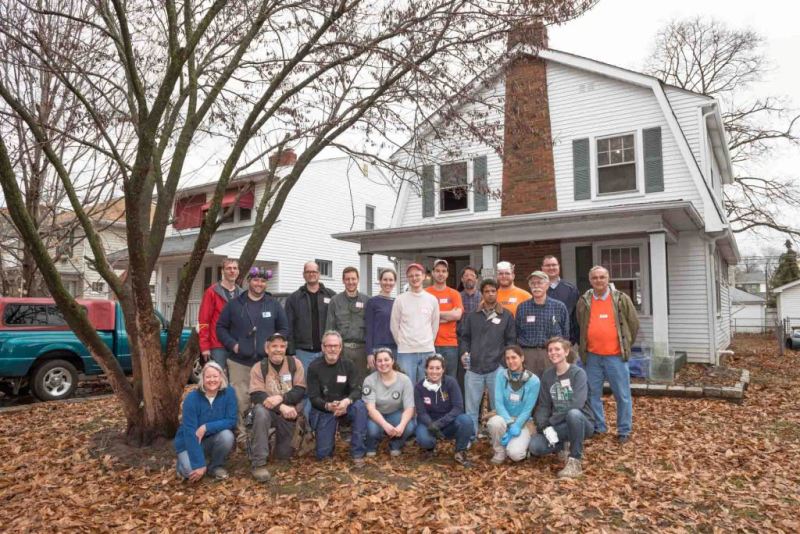
Attendees of the windows workshop gather outside the Westgate home. Photo courtesy of Stephen Newport.
It is the Young Ohio Preservationists board’s goal to provide unique experiences to both recreational and professional preservationists. And if you are wondering if you are too old to participate, do not worry! We invite people of all ages to engage with us.
Throughout the year we will be rolling out exclusive events, but here is a sneak peek for two experiences you cannot miss out on!
On April 25, the Young Ohio Preservationists are taking Newark by storm. The Licking County Foundation has invited us to tour the Louis Sullivan designed Home Building Association Bank, and they are coordinating some bonus historic building tours exclusively for the YOPs! Following the tours, we will be hosting a design charrette and helping the foundation brainstorm the best adaptive use opportunities for the Sullivan designed bank.
As part of the Green Lawn Abbey CLG grant, the YOPs will be hosting a marble cleaning workshop. Green Lawn Abbey is a 1927 neoclassical mausoleum listed in the National Register of Historic Places and has been undergoing a restoration for a number of years. The Centennial Preservation Group will teach participants the best practices for marble cleaning. Our assistance will bring Green Lawn Abbey one step closer to renting the space for events and creating a sustainable income source for maintenance.
Make sure to follow us on Facebook, Instagram, or join our mailing list by emailing yop@heritageohio.org to make sure you know about our events!
![]()



